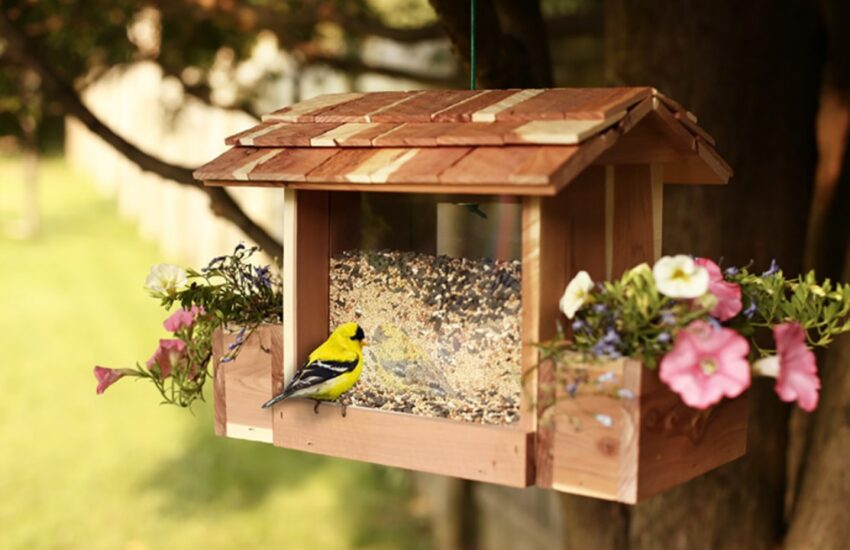A popular choice is cultivating fruit-bearing plants in the back garden or on a small plot of land. Doing so provides a sense of accomplishment and can yield abundant harvests once the trees mature. For those seeking reliable varieties, finding fruit trees for sale that are robust, disease-resistant, and well-suited to local conditions is often the first crucial step. Investing in a healthy young specimen forms the foundation of a productive orchard, whether on a grand scale or a more modest patch.
A nursery specialist at Chris Bowers shares: “In many British gardens, the main obstacle to producing abundant harvests is choosing the wrong variety. We regularly encourage new growers to consider apple trees that are well-suited to local microclimates, ensuring both resilience and reliable cropping throughout the season.”
The thrill of planting, nurturing, and eventually gathering fruit is something everyone can appreciate, regardless of garden size. Knowing that each piece of fruit has been grown in safe, natural conditions fosters a deeper connection to the food on your plate. While a large orchard is a dream for some, smaller spaces can often accommodate at least one or two carefully chosen trees. Their blossoms attract pollinators and add beauty to the landscape, while the fruit itself brings a welcome sweetness to family meals.
The following sections provide a straightforward look at how to grow your own fruit now, offering practical guidance on all the major steps involved, from selecting a suitable variety to battling pests and ensuring the trees thrive for years to come.
Choosing the Right Fruit Trees
Selecting the right fruit tree variety is a pivotal decision. A tree that is poorly matched to your region’s climate or soil may never thrive. Conversely, one that is hardy, well-adapted, and resistant to common diseases will flourish, rewarding your efforts with repeated harvests. While the climate across the British Isles can vary, certain fruit varieties have proven their adaptability over centuries of cultivation.
Apples rank among the most popular choices for home growers. In Britain, apples have a storied history, with countless heritage varieties long prized for their distinctive flavors. They can handle cool, wet conditions and typically cope well with the occasional mild frost. If you live in the south, where winters are relatively mild, you can even branch out into slightly more delicate cultivars that might otherwise struggle in the colder north. Similarly, areas with higher rainfall need varieties that are more tolerant of damp soil and potential fungal issues.
Plums and pears also make good candidates, provided you pay attention to rootstock selection, tree spacing, and pollination requirements. Some fruit trees are partially self-fertile, while others must be planted with a compatible partner for cross-pollination. In many British gardens, ensuring pollination can be as simple as asking a neighbor if they grow a fruit tree of a similar type, or introducing different varieties within the same space.
When browsing fruit trees, you may encounter numerous rootstock labels that indicate how tall the tree is expected to grow and how soon it might fruit. Dwarfing rootstocks typically produce more compact trees that fit into smaller gardens, whereas vigorous rootstocks encourage taller trees capable of producing heavier yields, though they can require more space and pruning to keep under control.
Nurseries will often specify which rootstock is used, along with other important details such as recommended soil pH, times to harvest, blossom group, and typical flavor profile. Some orchardists aim for maximum variety, planting apples, plums, pears, and cherries for a full spectrum of tastes and textures. Others prefer to dedicate their garden to a single type, focusing on the subtle differences among cultivars. Whichever path you choose, quality stock makes the entire process more manageable.
Soil Preparation and Planting Techniques
Preparing the soil well before planting is one of the best ways to set your fruit trees up for success. Many parts of Britain feature clay or loamy soils that can be rich in nutrients but prone to waterlogging during wet spells. If the planting area drains poorly, consider digging in plenty of organic matter, such as well-rotted compost or manure, to help loosen the structure. This practice also boosts the microbial life in the soil, improving both fertility and root penetration.
Testing your soil pH is helpful in determining how best to amend the ground. Apples, for example, often prefer a slightly acidic to neutral pH, whereas some other fruit trees might cope well in slightly more alkaline conditions. When possible, adjust the soil pH gradually rather than all at once, mixing in soil conditioners evenly to avoid creating pockets of extreme acidity or alkalinity.
Digging a sufficiently large hole is another step that is commonly overlooked. A cramped space hinders root expansion and impedes growth in the early years. Gently spreading out the roots while planting helps the young tree establish more quickly. Water the hole thoroughly and allow the moisture to absorb before placing the tree inside. The top of the rootstock should be just below ground level, ensuring any graft union remains above the soil line.
Firm the soil around the roots without compacting it excessively. A loose but supportive medium encourages roots to move outward, and watering immediately after planting settles the soil around them. If your location is exposed to strong winds, staking can be invaluable in preventing the tree from toppling over during storms. Ensure that any stake or tie is placed so as not to damage the trunk or roots.
Once a newly planted tree is in the ground, it may be tempting to add extra fertilizer. However, moderation is key. An initial supply of compost is generally enough, and adding too much nitrogen-rich fertilizer can result in lush foliage at the expense of fruiting wood. The young tree needs time to acclimate and develop strong roots before channelling its energy into heavy fruit production.
The Importance of Ongoing Maintenance
Even a carefully chosen and well-planted tree requires proper maintenance to reach its full potential. Watering can be critical for newly established saplings, especially if you plant them during a period of low rainfall. A thorough soaking once or twice a week is typically more beneficial than frequent, shallow watering, as it encourages deeper root systems. During particularly dry summers, a layer of organic mulch around the base of each tree helps retain moisture and suppress weeds.
Pruning is another essential aspect of fruit tree care. In the first few years, formative pruning establishes a strong framework of branches that allows adequate airflow and sunlight to penetrate the canopy. This practice reduces the risk of disease by preventing excess moisture from lingering on leaves and branches. Over time, regular pruning also encourages vigorous growth of fruiting spurs and manages the overall shape of the tree.
For apples and pears, winter pruning is commonly recommended. This type of pruning promotes a healthy balance between new, vegetative growth and fruit-bearing shoots. Summer pruning, though sometimes overlooked, can be helpful in controlling overly vigorous growth if certain varieties send out long, unproductive shoots later in the season. Knowledge of the basic principles of pruning—removing dead, damaged, or diseased wood; focusing on outward-facing buds; and maintaining an open, goblet-like shape—ensures that fruiting wood remains strong and healthy.
Pest and disease control also factors into any maintenance schedule. While choosing resistant varieties greatly reduces problems, the occasional pest can still appear. Regular inspections allow early detection. Removing damaged fruit or diseased leaves prevents pathogens from multiplying and spreading. If one variety continually battles infections or infestations, consider rotating it out of the garden in favor of a hardier alternative. Over time, good hygiene in your orchard can prevent large outbreaks and minimize the need for chemical treatments.
Controlling Weeds and Grass
Competing vegetation can sap vital nutrients and water from newly planted fruit trees, slowing their development. Many gardeners choose to keep a grass-free circle at least a metre in diameter around the trunk. This approach directs moisture and nutrients to the tree’s roots while reducing competition. Some people use bark chippings or wood mulch to suppress weeds around the base. However, mulch should be kept a small distance away from the trunk to prevent rot and pest harborage.
If weeds do appear, manual removal by hand is often the most straightforward method. Avoid heavy chemical weedkillers, especially near young fruit trees, as these chemicals can sometimes damage roots or stress the plant. Over time, as the tree grows stronger and more established, it becomes less vulnerable to competition. Even so, a clean, well-maintained area around the trunk remains an important part of orchard hygiene.
Maximizing Pollination and Fruit Set
Fruit trees rely on pollination for successful fruit set. Apples, pears, plums, and cherries typically need assistance from insects, particularly bees. Ensuring sufficient pollinators in your garden is a key step. Some gardeners plant flowering shrubs or wildflowers nearby to attract more bees, while others maintain small water sources and safe habitats for beneficial insects.
Self-fertile or partially self-fertile trees can set fruit on their own, but yields often improve with cross-pollination from a compatible variety. If space allows, planting two or three complementary trees ensures overlap in flowering times. Check pollination group charts when selecting varieties, especially if you are aiming for a prolonged harvest season or wish to optimize the volume of fruit.
In smaller gardens, grafted family trees offer a solution for those who lack the room to plant multiple individual trees. These specialized saplings carry several different cultivars on one trunk, each branch potentially pollinating the other. This approach is particularly useful in urban or suburban areas, where space for multiple free-standing trees may be unavailable.
Harvesting and Storage
Patience is essential when growing fruit at home. Many trees, especially those on more vigorous rootstocks, take a few seasons before producing a meaningful harvest. Once fruiting begins, timing the harvest becomes a matter of experience. Apples, for instance, often detach from the branch with minimal effort once ripe. Pears can be trickier: they frequently require picking just before they reach peak ripeness, finishing their final ripening off the tree to avoid a mealy texture.
Learning to judge ripeness is an important skill. Color, aroma, and firmness all offer clues. Gently twisting the fruit can also indicate readiness; if it leaves the spur easily, it is likely ready to be picked. Once harvested, store fruit in a cool, dark place with good ventilation. Wrapping each piece in a thin layer of paper can keep them from touching and bruising each other, extending the storage life of certain varieties for weeks or even months.
Some apple cultivars are renowned for their storage capabilities, while others are better consumed fresh. Pears typically have a shorter window but can still be preserved in jams, chutneys, or by dehydration. Over time, you will learn the nuances of each variety you grow, discovering which can be stored long-term and which are best eaten straight away.
Expanding Your Orchard
Once you experience success with a few trees, it is often tempting to expand and diversify. Fruit trees for sale can be found in many local nurseries, especially in autumn or early winter when planting is most commonly done. Trying new varieties or types of fruit can invigorate your garden, encouraging biodiversity and ensuring a steady supply of produce through different parts of the year.
Apricots and peaches, while generally associated with warmer climates, can be grown successfully in sheltered spots, particularly in the south of England. Protective covers and careful attention to blossom frosts in spring are essential. Figs, too, can thrive in microclimates near south-facing walls, benefiting from the extra warmth that masonry provides. By experimenting with these more exotic fruits, you push the boundaries of what is possible in a British climate.
However, it is important not to overreach. Each additional tree requires time, effort, and space. Planting more than you can manage may lead to neglected trees, reduced harvests, and potential disease outbreaks. Carefully planning the orchard layout—anticipating how large each tree will eventually become—helps avoid overcrowding. Trees that are too close together compete for nutrients and light, resulting in reduced vigor for all.
Dealing with Common Pests and Diseases
Fruit trees in Britain can be vulnerable to various pests and diseases, including codling moth, apple scab, and canker. Spotting problems early is key. Regular inspections of the bark, leaves, and developing fruit can reveal tell-tale signs such as small holes, discoloration, or unexpected lesions. Removing infested fruit promptly prevents pests from completing their life cycle. Meanwhile, disposing of fallen leaves or diseased plant material keeps pathogens from overwintering in the soil.
Biological controls—like encouraging natural predators such as ladybirds or lacewings—can be an effective way to keep pests in check. A balanced ecosystem in your garden promotes beneficial insects, while harsh chemical sprays may do more harm than good by disrupting this natural balance. If targeted treatments are needed, choosing horticultural soaps or organic-based solutions can help mitigate the risk to bees and other pollinators.
For diseases like apple scab or powdery mildew, pruning out infected branches and promoting good air circulation are vital measures. Fungicides can play a role if used judiciously, but consistent orchard hygiene often goes a long way toward preventing widespread infection. When planting new stock, seeking out disease-resistant cultivars is one of the best preventative strategies.
Year-Round Care and Seasonal Tasks
Seasonality plays a major role in fruit tree care. While late autumn and winter may seem like dormant periods, they are often the best times to plant new trees. The soil is typically moist, and cool temperatures encourage root development without stressing the tree. Winter pruning can be conducted on apple and pear trees, shaping them and removing any crowded or damaged growth.
Spring brings a burst of activity as blossoms appear. Keeping an eye on frost forecasts is especially important. In regions prone to spring frosts, some gardeners choose to cover the blossoms overnight with protective fleece if severe cold is anticipated. Overfeeding with nitrogen fertilizers in spring can produce weak, sappy growth susceptible to pests, so balance is essential.
Summer is when fruit develops, and attention turns toward watering, mulching, and perhaps light pruning to manage particularly vigorous shoots. In the lead-up to harvest, thinning excess fruit ensures that the remaining ones grow to a desirable size and ripen evenly. Thinning is also a defense against branches snapping under the weight of too many fruits.
By late summer and autumn, the main harvest period arrives. The exact timing varies by variety and region. Some apples and pears ripen early, while others are harvested as late as October. Once leaves drop, you have a clearer view of the structure of the tree, making it an ideal time for further pruning, cleanup, and soil amending. This cycle of seasonal tasks continues year after year, yet it is rarely monotonous. Each season brings its own challenges and rewards, and over time, the rhythm becomes a familiar routine.
Benefiting Wildlife and the Wider Environment
Beyond the personal pleasure of harvesting home-grown fruit, planting fruit trees brings positive impacts for wildlife. Blossoms offer a rich source of nectar for bees, butterflies, and other pollinators in spring. As the fruit matures, birds and small mammals may seek out windfall apples or plums, though you may need to limit their feasting if you want to preserve your own share. The trees themselves also provide shelter and nesting sites, contributing to biodiversity.
In an era of concerns about declining pollinator populations, planting pollinator-friendly fruit trees is a constructive way to support ecological balance. You can supplement this approach by maintaining a variety of flowering plants that bloom at different times of the year, ensuring a continual food source for beneficial insects. Healthy orchards often become vibrant ecosystems that extend well beyond their trees, highlighting the interconnectedness of plants, insects, and local wildlife.
Enjoying the Bounty in Different Forms
Once your fruit trees start producing, you may quickly find yourself with more apples, pears, or plums than you can consume fresh. Fortunately, there are numerous ways to preserve or transform the harvest. Making jams, jellies, and chutneys captures the essence of summer and autumn to be enjoyed in the colder months. Freezing sliced apples or pears is another convenient method, allowing you to use them later in pies or crumbles.
Drying fruit is an age-old technique that concentrates sweetness and prolongs shelf life. Apples or pears can be sliced thinly and dried in a low-temperature oven or dehydrator until they become leathery. Homebrewing enthusiasts might explore cider-making or fruit wines. With modern techniques that have roots in traditional methods, there is nearly no limit to how you can make the most of a bumper harvest.
Preservation methods also let you share your success with friends, neighbors, and local community members. Exchanging jars of jam or fresh fruit fosters a sense of camaraderie among gardeners. The ability to enjoy home-grown produce long after the harvest season ends is an enduring reminder of the rewards that come from nurturing fruit trees all year round.
Planning for the Future
Establishing a fruit tree is an investment not just in the present but for decades to come. A well-tended apple or pear tree can continue bearing fruit for decades, sometimes over half a century. Regular pruning keeps the tree productive and helps maintain its overall health. By planning your orchard with future generations in mind, you contribute to a legacy of sustainable food production.
Considering how your garden might evolve is part of that process. Fruit trees can anchor a larger design that includes ornamental shrubs, flowers, and perhaps even a vegetable patch. With careful consideration of spacing and eventual tree size, you can create a coherent layout that provides both practical harvests and aesthetic appeal. Ensuring good airflow and plenty of sunlight helps manage disease pressure and supports healthy growth for all plants in the area.
If you become particularly enthusiastic, you may discover heirloom or heritage varieties from local nurseries or orchard preservation societies. Many of these old cultivars offer flavors and characteristics that have fallen out of mainstream commercial production but are beloved by home growers. By preserving and propagating these varieties, you participate in an ongoing effort to maintain agricultural biodiversity.
Conclusion
Growing your own fruit now is both an accessible and richly rewarding enterprise for gardeners across Britain. The process begins with thoughtful planning: evaluating soil conditions, selecting the right varieties, and ensuring pollination requirements are met. With a bit of patience and dedication, each tree becomes a source of satisfaction, contributing to a healthy lifestyle and a more sustainable future. Although challenges may arise, modern horticultural knowledge and tried-and-true methods make it simpler than ever to address pests, diseases, and environmental obstacles.
There is a timeless quality to planting fruit trees—an interweaving of past traditions and future aspirations. As the seasons cycle, the orchard matures, and each harvest feels like a shared victory between gardener and nature. Whether you begin with just a single apple tree in a small back garden or aspire to cultivate a more diverse orchard, the fundamentals remain the same. Good-quality stock, careful planting, diligent pruning, and considerate pest management all lay the groundwork for abundant harvests.
Countless people have begun to appreciate the taste, nutritional benefits, and eco-friendly advantages of home-grown produce. Sourcing reliable fruit trees for sale is only part of the equation; consistently nurturing them leads to years of productivity. From the first blossoms in spring to the final fruit picked before winter’s chill, the journey is both enlightening and fulfilling. Beyond the tangible rewards of fragrant blossoms and succulent fruit, growing your own orchard offers a deeper connection to the rhythms of the land. It is an enterprise that honors tradition while shaping a more sustainable and fruitful tomorrow—truly, an endeavor worth pursuing for anyone who values fresh, natural goodness at home.











